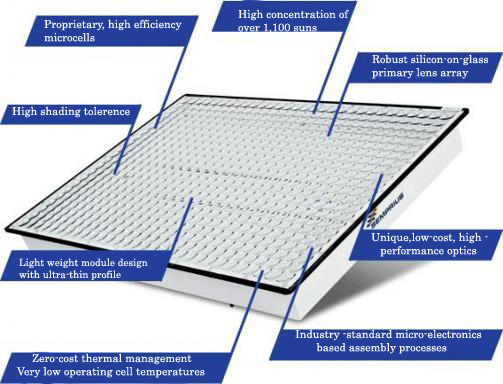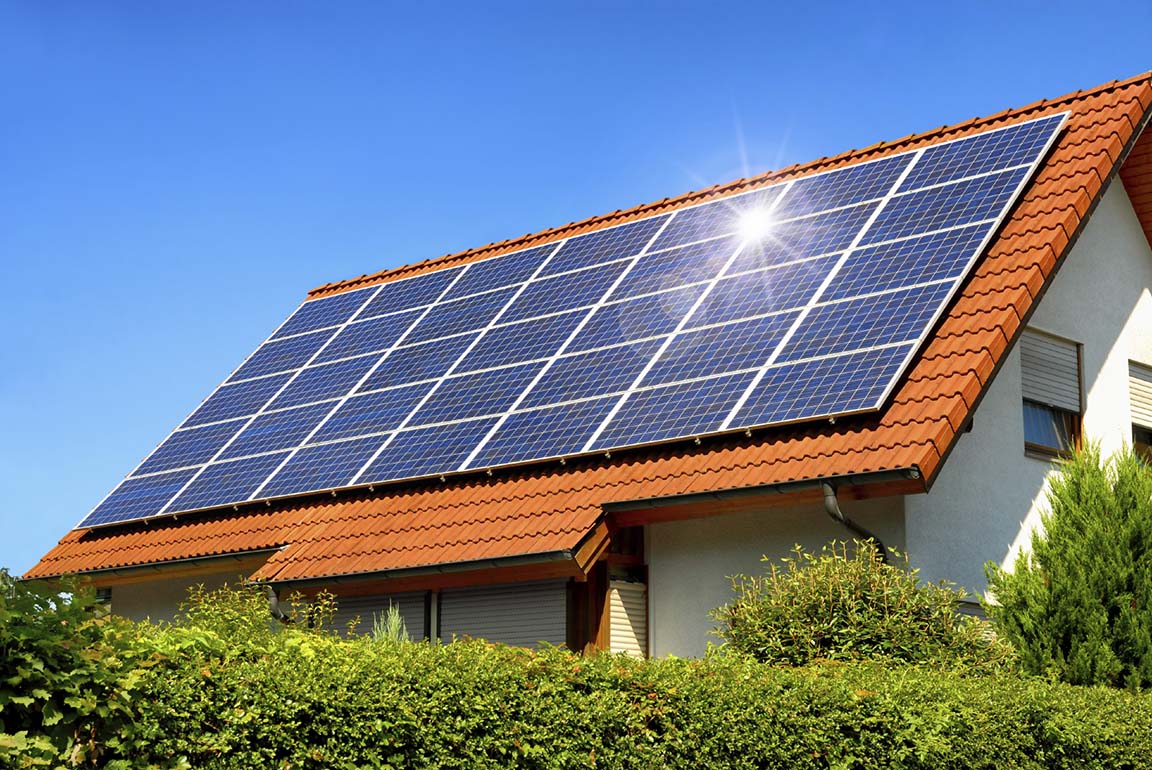
Solar technologies have evolved a lot since they first made their debut in the 1960s. While previously solar photovoltaics (PV) were seen as a thing of the future, today, technological breakthroughs have positioned the industry for huge growth.
A series of new developments in solar PV technology also promise to contribute to the industry’s success.
Advances in Solar Technology
Researchers have longed looked for ways to improve the efficiency and cost-effectiveness of solar cells – the life blood of solar PV systems. A solar PV array is comprised of hundreds, sometimes thousands of solar cells, that individually convert radiant sun light into electrical currents. The average solar cell is approximately 15% efficient, which means nearly 85% of the sunlight that hits them does not get converted into electricity. As such, scientists have constantly been experimenting with new technologies to boost this light capture and conversion.

Light-Sensitive Nanoparticles. Recently, a group of scientists at the University of Toronto unveiled a new type of light-sensitive nanoparticle called colloidal quantum dots, that many believe will offer a less expensive and more flexible material for solar cells. Specifically, the new materials use n-type and p-type semiconductors – but ones that can actually function outdoors. This is a unique discovery since previous designs weren’t capable of functioning outdoors and therefore not practical applications for the solar market. University of Toronto researchers discovered that n-type materials bind to oxygen – the new colloidal quantum dots don’t bind to air and therefore can maintain their stability outside. This helps increase radiant light absorption. Panels using this new technology were found to be up to eight percent more efficient at converting sunlight.
Gallium Arsenide. Researchers at Imperial College University in London believe they have discovered a new material – gallium arsenide – that could make solar PV systems nearly three times more efficient than existing products on the market. The solar cells are called “triple junction cells” and they’re much more efficient, because they can be chemically altered in a manner that optimizes sunlight capture. The model uses a sensor-driven window blind that can track sun light along with “light-pipes” that guide the light into the system
Advances in Solar Energy
Another major focus of scientists is to find new ways to store energy produced by solar PV systems. Currently, electricity is largely a “use it or lose it” type resource whereby once it’s generated by a solar PV system (or any type of fuel source) the electricity goes onto the grid and must be used immediately or be lost. Since the sunlight does not shine twenty four hours a day, this means that most solar PV systems are only meeting electrical demands for a portion of the day – as a result, a lot of electricity is lost, if it’s not used. There are a number of batteries on the market that can store this energy, but even the most high-tech ones are fairly inefficient; they’re also expensive and have a pretty short shelf life, making them not the most attractive options for utility companies and consumers. That is why scientists are exploring different ways to store this electricity so that it can be used on demand.
Molten Salt Storage Technology. A company called Novatec Solar recently commissioned a promising energy storage solution for solar PV systems using a molten salt storage technology. The process uses inorganic salts to transfer energy generated by solar PV systems into solar thermal using heat transfer fluid rather than oils as some storage system have. The result is that solar plants can operate at temperatures over 500 degrees Celsius, which would result in a much higher power output. This means that costs to store solar would be lowered significantly and utility companies could finally use solar power plants as base load plants rather than to meet peak demand during prime daylight hours.
Solar Panel with Built-In Battery. In a project funded by the United States Department of Energy, Ohio State University researchers recently announced they created a battery that is 20% more efficient and 25% cheaper than anything on the market today. The secret to the design is that the rechargeable battery is built into the solar panel itself, rather than operating as two standalone systems. By conjoining the two into one system, scientists said they could lower costs by 25% compared to existing products.
Advances in Solar Cell Manufacturing
Another area that has made solar PV technologies cost prohibitive compared to traditional fuel sources is the manufacturing process. Scientists are also focused on ways to improve the efficiency of how solar components are manufactured.
Magnesium Chloride. While over ninety percent of solar panels on the market today are comprised of silicon semiconductors, the key ingredient to converting sunlight into electricity, many believe the next generation of solar panels will be made of a thin film technology that uses narrow coatings of cadmium telluride in solar cells – this technology promises to be a much cheaper and more efficient way to engage the photovoltaic process. One major obstacle for cadmium telluride thin film cells is that they become highly unstable during the manufacturing process, which currently uses cadmium chloride. Researchers have devised a new, safe and seemingly low cost way to overcome this hurdle by using a material called magnesium chloride in replace of cadmium chloride. Magnesium chloride is recovered from seawater, an abundant resource, which makes the resource very low cost, as well as non-toxic. Replacing the manufacturing process with this material promises to increase the efficiency of these solar cells from two percent to up to fifteen percent.
New Solar Applications
When most people think of solar PV systems they think of them atop roofs or mounted for industrial scale use. But researchers are exploring a number of unconventional solar applications that could promise to transform the industry.
Solar Roadways. Scientists are exploring ways to actually line highways and roads with solar panels that would then be used to deploy large amounts of electricity to the grid. This would help overcome a major barrier to industrial scale solar, which opponents say threatens to take up too much land. Solar roadways have already popped up in the Netherlands.
Floating Solar. Another way to address land use concerns associated with wide scale solar is to erect solar plants on the water, since over 70% of the Earth’s surface is covered in water. Some researchers, including a French firm called Ciel et Terre, are experimenting with this technology. The company has projects set up in France, Japan, and England and other parts of the world are also piloting projects including a project in India and California in the U.S.
Space Based Solar. Scientists are resurrecting a technology that was first tested over forty years ago in which space-based satellites capture sunlight and convert it into microwave energy that is then beamed back to earth. This type of technology promises to capture significant more amount of sunlight (nearly ninety percent) since satellites can be positioned to optimize light capture round the clock. India, China and Japan are investing heavily in these technologies right now.
